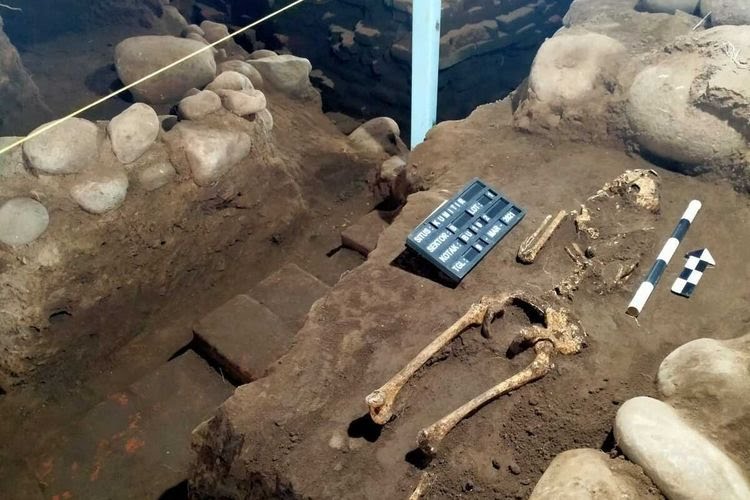UNAIR NEWS – Another remains of Majapahit Kingdom were found at Kumitir Site, Mojokerto on Wednesday, March 3, 2021. This time the findings were in the form of three human skeletons found during the third stage of excavation carried out by the East Java Cultural Heritage Conservation Center (BPCB) in the west of Dusun Bendo public cemetery, Kumitir Village. The human skeleton was found at a depth of 60 cm in sector C of the Kumitir Site.
Universitas Airlangga (UNAIR) Forensic Anthropology expert Dr. Phil. Toetik Koesbardiati who was also part of the research with the East Java BPCB Excavation Team said that one of the three skeletons was relatively structurally intact.
“It is crumbled in several places. However, the skeletal structure from the skull to the feet is still complete. Likewise, the ribs, spine, and arms, “said the lecturer of Forensic Anthropology, Faculty of Social and Political Sciences (FISIP) UNAIR.

Based on the pelvic and skull observation, the skeleton was identified as female with an estimated age of 20-30 years and height of 141-153 cm. Dr. Toetik, who has been involved in the excavation effort since Tuesday, March 9, 2021, has also taken samples of the ear bones and hand bones for identification.
The position of the woman’s skeleton is quite unique because it is on her stomach. Therefore, an Archaeothanatology analysis to determine the reason for the prone position will be carried out immediately when all the skeletal parts have been exposed and the excavation data has been completed.
Likewise with the determination of the age of the skeleton to find out whether the skeleton is related to the Majapahit era or modern human skeletons buried there. It needs to be done because right to the east of the discovery site is the public burial place of Bendo Hamlet.
“That’s why we need to conduct dating to find out exactly what age or what time the remains of this human skeleton ever lived,” she added.
If the skeletons come from the Majapahit era, Dr. Toetik believes that this finding will be very valuable for human information in the classical era of Majapahit, which is still rare. Moreover, if DNA analysis has been obtained, the researcher can find out the population affiliation of the skeleton.
“Even if it is not from the Majapahit era, it means it is a human from the modern era, still the finding of human remains is meaningful to be studied as long as it does not violate the code of ethics and local culture,” said Dr. Toetik.
Apart from having the potential to be an important finding of humans in the classical era of Indonesia, these skeletons can also be used as an educational medium for students to gain hands-on experience in the field.
Dr. Toetik joined this research after being contacted by the leader of the East Java BPCB excavation team who provided a photo of the bone part that was sticking out of the excavation site. The Kumitir site is a cultural heritage believed to be the Bhre Wengker palace in the Majapahit Kotaraja Complex.
Author: Intang Arifia
Editor: Khefti Al Mawalia





